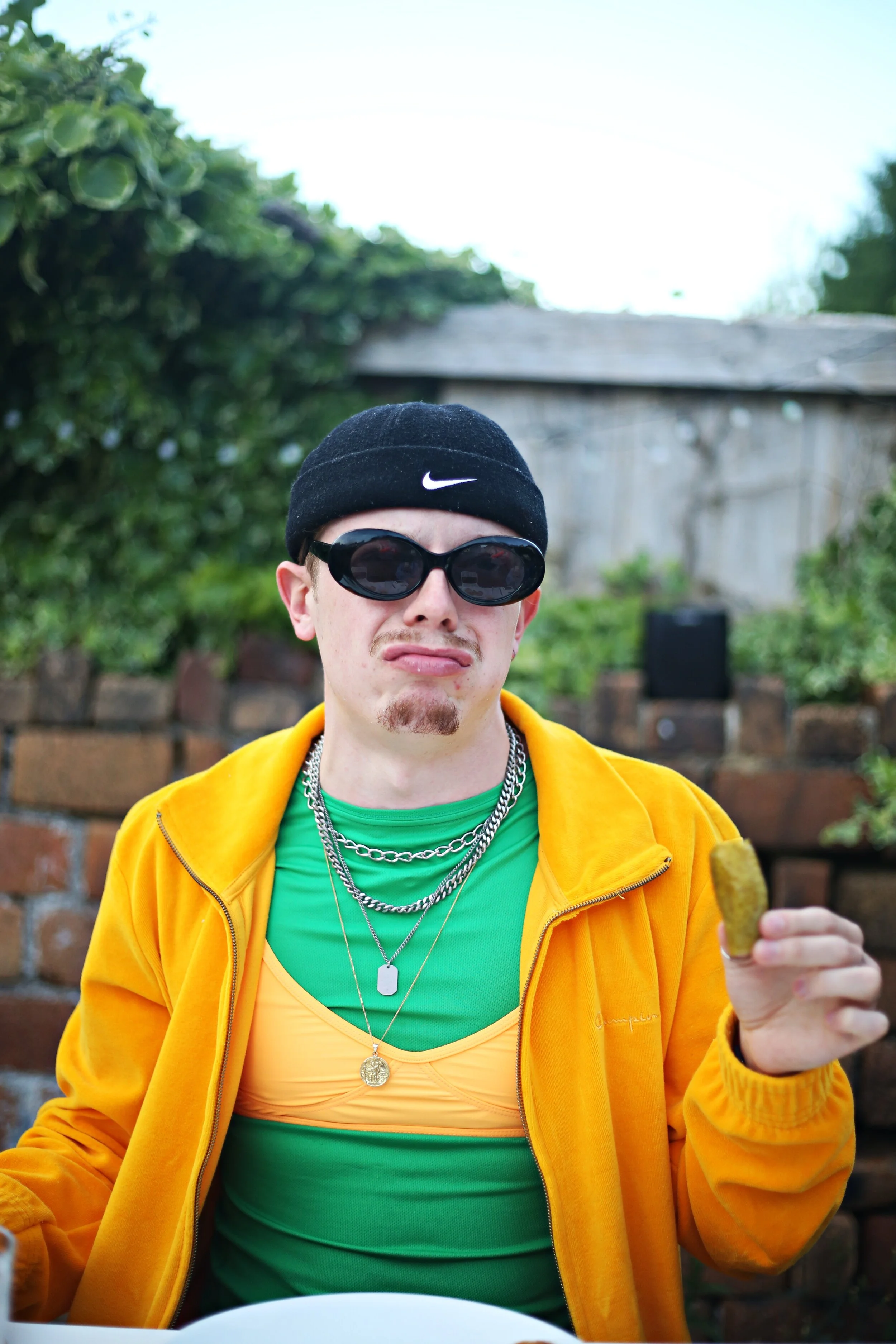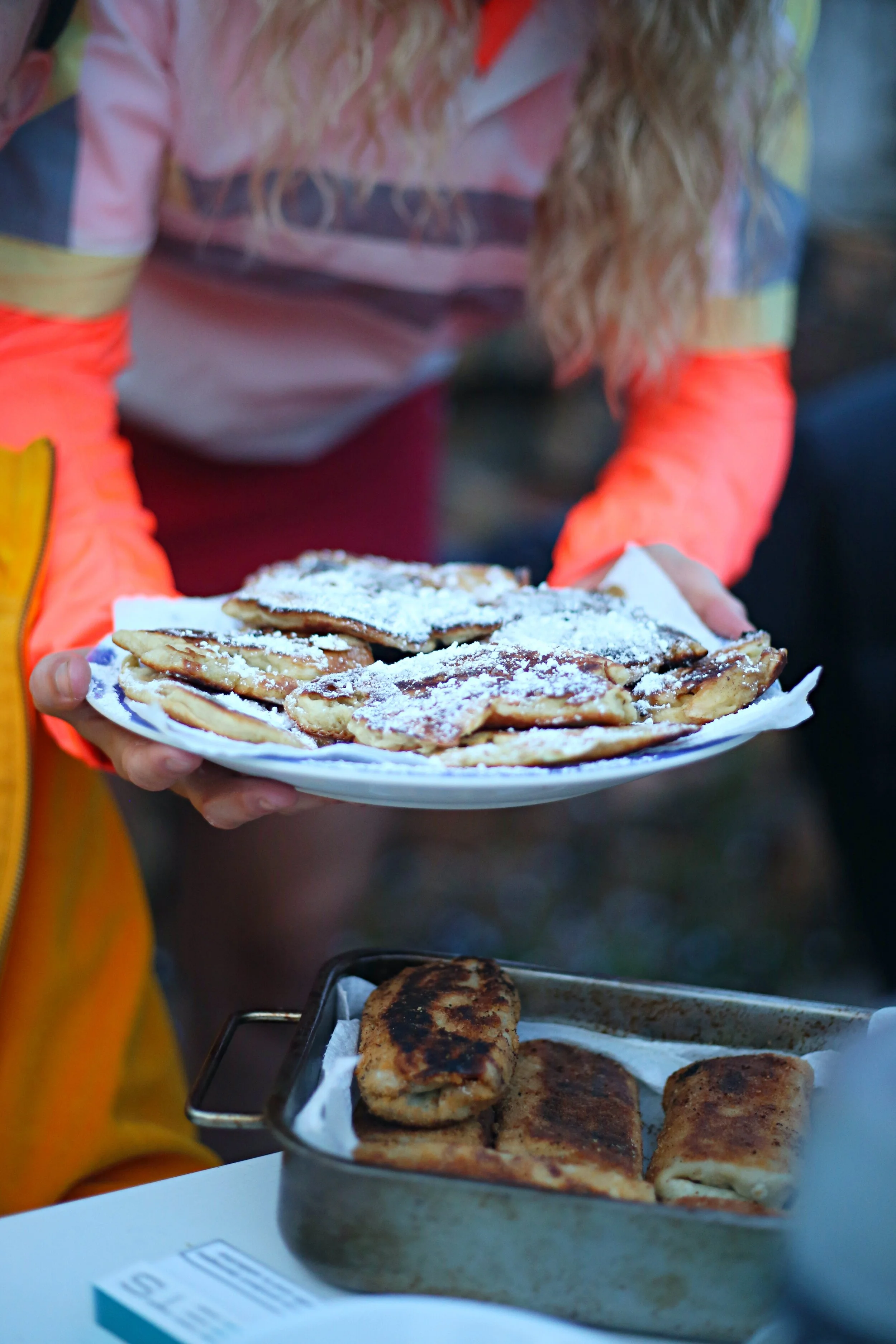Pastéis de Nata (Portuguese Custard Tarts)
Song Suggestions:
Bom Dia, Amor (Carta de Maria José) - Carminho
Oiça Lá Ó Senhor Vinho - Amália Rodrigues
Amor Ladrão - Cuca Roseta
Ingredients (makes 6-8):
2 big lemon peels
2 small cinnamon sticks or 1 large
150ml soy milk
200ml soy cream
35g cornstarch
150g brown sugar
1 tsp vanilla extract (optional, depending on how strong and sweet you like the taste of your desserts!)
1/2 sheet puff pastry (massa folhada)
Recipe:
Pastry work:
Defrost your pastry/let it set at room temperature until you can roll it out.
Gather 6-8 moulds. If you have special mini custard tart moulds then great! But if not, not a problem. Use a muffin tray and just line them with muffin cases. Alternatively, you can also make your own moulds using tin foil (cut out a square and shape it around the bottom of a circular glass by stretching it over the edges and bringing the sides down tight).
Unroll the pastry. Using a sharp knife, lay a mould face down onto the pastry and cut around the edge. Repeat this until you have enough circles of pastry to fill all your cases.
One by one, using a rolling pin, roll out the pastry circles until they’re all slightly larger and thinner but still circular.
Line each mould with a pastry circle, ensuring the pastry stretches all the way to the edge of each case. Little overlaps are absolutely fine! Just compress them slightly to get as uniform a texture as possible. Gently press the edges down against the rim of the case.
Preheat the oven to 200°C, preferably on a fan assisted setting.
Making the custard
Combine the milk and cream together in a small pan.
5g at a time, sift in the cornstarch and whisk. Continue until all the cornstarch is sifted into the milk and cream mixture.
On a small hob and on a low heat, warm the mixture with the cinnamon sticks and lemon peels inside. Using a whisk, gently stir. Make sure the lemon peels don’t stick to the side of the pan, you want them as central as possible in order to diffuse their flavour fully!
At the first signs of the custard thickening, start to add the sugar. I tend to do this in three parts. Add some sugar, whisk it in until it’s all dissolved, repeat and repeat again.
Keep whisking until a smooth, thick and silky custard forms.
Turn off the heat and let cool for 2 to 3 minutes.
Assembling the ‘pastéis’
Spoon the mixture into each case, about 3/4 of the way full.
Place them on a baking tray and bake in the oven for any time between 12-15 minutes. You want the pastry a dark brown, but not burnt and the custard also a dark colour on top but not burnt. The ‘pastéis’ will inflate and dome in the oven - this is normal and usually means they are almost ready so keep a close eye on them when you see this happening!
Once out, let them deflate and cool before eating.
Best served listening to ‘fado’ in the background (song suggestions opposite), with a generous sprinkle of cinnamon on top and an espresso on the side. “Um pastél de nata e uma bica”.
A Bite Out of Life
During the first coronavirus lockdown in 2020, our final year uni house got through the weeks by eating. Ana one day decided to host a Spanish themed dinner after finding out the boys had never eating ‘croquetas’. It then turned into a tradition we maintained that we each did a dinner based on the food from our country. Over the weeks, we had a Spanish, Portuguese, English and Polish night (and then we picked random nationalities once we ran out of our own). Pictured here was the start of our Polish themed night. Our Polish housemate Maria got everyone doing a shot of vodka and eating a pickle to kick off dinner - as you can see, some braved it but others were not quite fans (including Maria). The rest of dinner was delicious: cabbage and potato dumplings and for dessert we had polish apple pancakes, all eaten to the sound of Disco Polo (Polish club music, some absolute hype songs in and amongst the mix, definitely recommend).
enjoy food, enjoy life.










